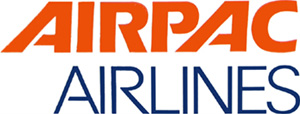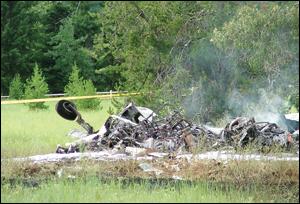Country
Operator Image

Crash of a Piper PA-31-350 Navajo Chieftain in Easton: 1 killed
Date & Time:
Jul 11, 2006 at 1735 LT
Registration:
N40ST
Survivors:
No
Schedule:
Spokane - Seattle
MSN:
31-7405183
YOM:
1974
Crew on board:
1
Crew fatalities:
Pax on board:
0
Pax fatalities:
Other fatalities:
Total fatalities:
1
Captain / Total hours on type:
102.00
Aircraft flight hours:
3646
Circumstances:
While cruising en route in VFR conditions, the aircraft lost power on both engines. The pilot attempted an emergency forced landing at a nearby unpaved State airport, but after encountering a 20 mph tailwind on downwind and a 20 mph headwind on final, the aircraft impacted a tall conifer tree while about one-half mile from the approach end of the runway. The reason for the dual engine power loss was not determined.
Probable cause:
The loss of power in both engines for undetermined reasons while in cruise flight, leading to an attempted forced landing. Factors include unfavorable winds at the site of the forced landing, and trees off the approach end of the grass runway the pilot was attempting to land on.
Final Report:

Crash of a Piper PA-31-350 Navajo Chieftain near Novato: 1 killed
Date & Time:
Mar 5, 1998 at 1905 LT
Registration:
N257NW
Survivors:
No
Schedule:
Santa Rosa - Oakland
MSN:
31-7952014
YOM:
1979
Flight number:
APC263
Crew on board:
1
Crew fatalities:
Pax on board:
0
Pax fatalities:
Other fatalities:
Total fatalities:
1
Aircraft flight hours:
6881
Circumstances:
The airplane was on a VFR dusk cross-country flight when it collided with the 1,500-foot level of a hill. Radar data showed the aircraft in a descent from 2,000 feet until radar contact was lost about 1,500 feet msl, with a final ground speed of 194 knots. The route taken by the pilot was about 5 miles west of the route that the company pilots routinely flew, but while crossing higher terrain, it was a more direct route to the destination. A company pilot flying a few minutes ahead of the accident flight reported it was necessary to descend to between 1,200 and 1,500 feet msl in order to maintain VFR. A low-pressure system approaching the area from the west had resulted in low stratus, rain, and fog. At the time of the accident, a nearby weather reporting facility reported a 1,300-foot broken ceiling with 5- to 6-mile visibility in light rain and mist. On the evening of the accident, the pilot was scheduled to give a speech as her final examination in an evening college course. She had informed the instructor that she might be late, but had been told that he could not hold the class past its scheduled dismissal time to accommodate her late arrival.
Probable cause:
The pilot's failure to maintain adequate terrain clearance after initiating a descent over mountainous terrain at night and under marginal VFR conditions. The pilot's self-induced pressure to arrive at class with enough time remaining to take the final examination was a factor in the accident.
Final Report: